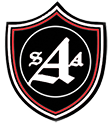2nd grade is a pivotal grade level in your student’s schooling development. It is when math skills begin turning from rote memorization skills to critical thinking skills. Word problems with multiple steps begin to become prevalent in your students work and they even begin gaining skills to understanding multiplication. That is why having those foundational kindergarten/1st grade skills is so critical to succeeding in 2nd grade.
Things your student needs to know by the end of 2nd grade:
- Fluently add and subtract within 20
- Add and subtract up to 3 digit numbers
- Work with equal groups of objects to gain foundations for multiplication
- Understand what even and odd numbers are
- Understand place value (ones, tens, hundreds)
- Measure and estimate length in standard units (previously, they have worked on measurement with non-standard units) AND be able to add and subtract lengths
- Tell tune to the nearest 5 minutes
- Identify coins, their value, and count them
Things to do at home:
- Count out 20 cheerios (or M&M’s, skittles, basically anything that can double as a snack!) and have your student make different combinations (i.e. 12+8, 10+10, etc.)
- Grab another family member so there’s three of you and each of you be a place value (ones, tens hundreds) and each of you write a number 0-9 on a piece of paper (or whiteboard) and build a 3 digit number. Have your student read the number to you.
- Count out any number of cheerios (or, again, anything that can double as a snack!) with the total not exceeding 30. Have your student practice putting them into equal groups and telling you they have x groups of x (i.e. 3 groups of 4 to equal 12). Have them see how many different groupings they can make with one number (12, 16 and 20 are good numbers to work with).
- If you have a ruler (or measuring tape, or yard stick) have them go around the house to measure various things.
- Be a human clock! You and your student be the hands of the clock and either place numbers in a circle, or use furniture as the markers and use your bodies to create the time!
- Practice counting coins! One of the most challenging thing for students is being able to count a pile of mixed coins in a correct and organized manner. For example, if you have 3 dimes and 2 nickels, you would count 10, 20, 30, 35, 40. Students generally struggle when it comes time to switch from counting by 10’s to counting by 5’s.
- Practice skip counting to their favorite exercise ( jumping jacks, push ups, anything to get them moving). Practice counting by 5’s, 10’s and 100’s.

